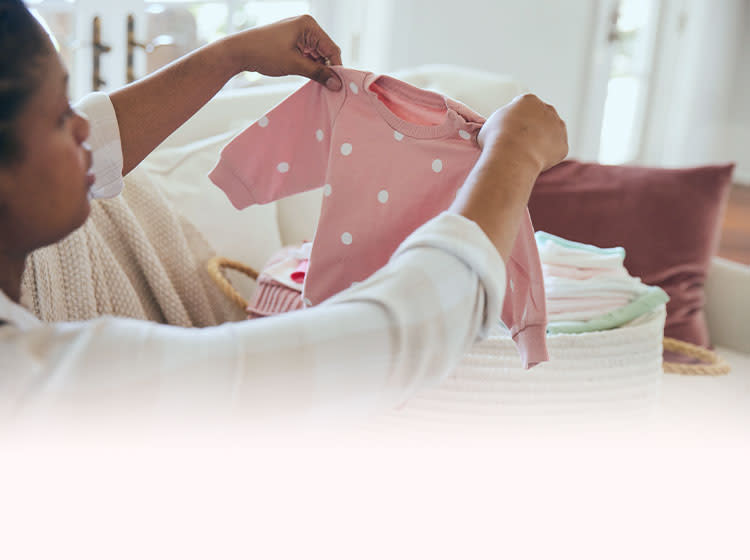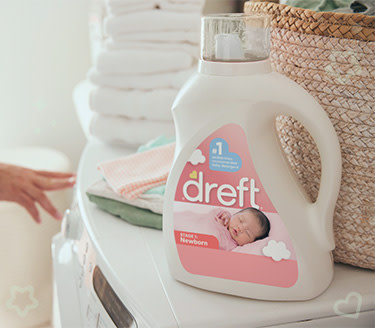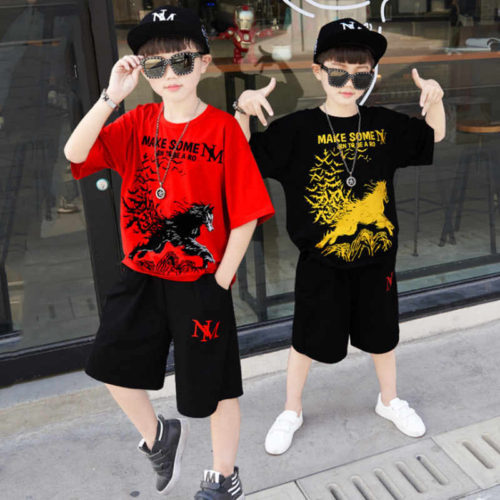To remove formula stains from baby clothes, act quickly by rinsing the stained area with cold water. Then, use a stain remover or a mixture of baking soda and water before washing as usual.
Baby clothes often fall victim to formula stains, making them look unsightly. These stains can set quickly, so prompt treatment is essential. Gentle fabrics require careful handling, but effective cleaning methods exist. Common household items like baking soda and vinegar can work wonders.
Choosing the right stain remover can save your baby’s favorite outfits. Regular washing and immediate attention to stains help maintain the clothing’s appearance. Understanding how to tackle these stains ensures your baby’s wardrobe stays fresh and clean. Follow these steps to keep those little clothes looking their best.
Table of Contents
Introduction To Baby Formula Stains
Baby formula stains can be a real headache for parents. These stains often appear on clothes after feeding. They can be tricky to remove. Understanding these stains is the first step to tackling them.
The Challenge With Baby Clothes
Baby clothes are often made of delicate fabrics. Stains from baby formula can be tough to deal with. Here are some challenges:
- Fabrics can shrink or lose color.
- Stains can set quickly if not treated.
- Special care may be needed for different materials.
Why Formula Stains Are Stubborn
Formula stains have unique characteristics. They contain fats, proteins, and sugars. This combination makes them harder to remove. Here are some reasons why:
- Fat Content: The fat in formula clings tightly to fibers.
- Protein Residue: Proteins can bond with fabric, making stains stubborn.
- Quick Drying: Formula dries quickly, making stains harder to treat.
Understanding these factors helps in choosing the right cleaning methods.

Credit: www.dreft.com
Immediate Actions To Take
Stains from baby formula can be tough. Quick actions help remove them effectively. Here are two crucial steps to follow right away.
Blotting The Stain
Start by gently blotting the stain. Use a clean cloth or paper towel.
- Press down on the stain.
- Avoid rubbing; this spreads the stain.
- Keep blotting until no more liquid comes off.
Blotting helps lift some of the stain. This makes washing easier later.
Rinsing With Cold Water
Next, rinse the stained area with cold water.
- Hold the fabric under a cold water tap.
- Ensure the water flows through the back of the stain.
- Let the water run for a few minutes.
Cold water helps prevent the stain from setting in. Always rinse as soon as possible for best results.
Pre-treating The Stain
Removing formula stains from baby clothes starts with pre-treating the stain. This step helps break down the formula residue. Fast action improves the chances of complete removal.
Choosing A Pre-treatment Solution
Select the right product for effective stain removal. Here are some options:
- Stain Remover Spray: Works quickly and targets stains.
- Liquid Laundry Detergent: A common choice for pre-treating.
- White Vinegar: A natural option for tough stains.
- Baking Soda Paste: Mix baking soda with water for a paste.
Always check the label for safety on baby clothes. Test the solution on a small, hidden area first.
Application Techniques
Apply the pre-treatment solution correctly for best results. Follow these steps:
- Blot the Stain: Use a clean cloth to absorb excess formula.
- Apply the Solution: Spray or rub the chosen pre-treatment onto the stain.
- Let it Sit: Allow the solution to penetrate for 5-10 minutes.
- Gently Rub: Use your fingers or a soft brush to work it in.
- Rinse with Cold Water: Remove any excess solution before washing.
This process helps lift the stain before washing. Always follow up with a complete wash.
Natural Stain Removal Solutions
Natural stain removal solutions are safe and effective. They help remove formula stains from baby clothes without harsh chemicals. Simple ingredients can work wonders on stubborn stains.
Using Lemon Juice
Lemon juice is a powerful natural stain remover. It contains citric acid, which breaks down stains effectively. Here’s how to use it:
- Mix equal parts of lemon juice and water.
- Apply the mixture directly onto the stain.
- Let it sit for 15-30 minutes.
- Rinse with cold water.
- Wash the clothing as usual.
For best results, use fresh lemon juice. This method not only removes stains but also leaves a fresh scent.
Baking Soda And Its Benefits
Baking soda is another excellent natural stain remover. It works by lifting stains and neutralizing odors. Here’s how to use baking soda:
- Make a paste with baking soda and water.
- Apply the paste to the stained area.
- Gently scrub with a soft brush.
- Let it sit for 30 minutes.
- Rinse and wash the clothing.
Benefits of baking soda include:
| Benefit | Description |
|---|---|
| Non-toxic | Safe for baby clothes and skin. |
| Odor Neutralizer | Removes bad smells effectively. |
| Stain Lifter | Effective on various types of stains. |
Using natural ingredients like lemon juice and baking soda keeps baby clothes clean and safe.
Diy Stain Removers
Dealing with formula stains on baby clothes can be tough. Luckily, you can make effective DIY stain removers at home. These methods use simple ingredients. They are safe for baby clothes and easy to prepare. Get ready to tackle those stubborn stains!
Homemade Paste Recipes
Creating a stain-fighting paste is simple. Here are two effective recipes:
| Ingredients | Instructions |
|---|---|
|
|
|
|
Vinegar As A Stain Fighter
Vinegar is a powerful stain remover. It works well on formula stains. Here’s how to use it:
- Mix equal parts vinegar and water.
- Soak the stained area for 10 minutes.
- Gently scrub with a soft cloth.
- Rinse thoroughly with cold water.
- Wash the garment in the machine.
Vinegar helps break down the stain. It also removes odors. This method is safe for all fabric types.

Credit: www.youtube.com
Enzymatic Cleaners
Enzymatic cleaners are powerful solutions for removing tough stains. They contain special proteins called enzymes. These enzymes break down the stains, making cleaning easier and more effective.
How Enzymes Break Down Proteins
Enzymes are natural substances that help speed up chemical reactions. They target specific components in stains. Here’s how they work:
- Proteases: Break down protein-based stains like formula.
- Amylases: Break down starches from baby food.
- Lipases: Break down fats and oils.
When these enzymes come into contact with stains, they start to digest them. This process makes it easier to wash away the remaining residue.
Best Practices For Using Enzymatic Cleaners
Using enzymatic cleaners correctly can enhance their effectiveness. Follow these best practices:
- Always read the label for instructions.
- Test the cleaner on a small fabric area.
- Apply the cleaner directly to the stain.
- Let it sit for the recommended time.
- Wash the clothes in warm water.
- Air dry to avoid heat setting any remaining stains.
Remember, not all fabrics are safe for enzymatic cleaners. Avoid delicate fabrics like silk or wool. Opt for cotton or polyester instead.
| Enzyme Type | Stain Type |
|---|---|
| Proteases | Formula stains |
| Amylases | Baby food stains |
| Lipases | Greasy or oily stains |
Using the right enzymatic cleaner will help keep baby clothes fresh and clean. Stains can be stubborn, but enzymes make the job easier.
Laundry Detergents And Stain Removal
Removing formula stains from baby clothes can be tricky. Choosing the right laundry detergent makes a big difference. Some detergents work better than others on tough stains.
Selecting The Right Detergent
Not all detergents are created equal. Look for these features:
- Enzyme-based detergents are effective against protein stains.
- Hypoallergenic options prevent skin irritation.
- Color-safe formulas protect bright colors from fading.
Here’s a quick comparison of popular detergents:
| Detergent Brand | Best For | Notes |
|---|---|---|
| Tide Free & Gentle | Sensitive skin | Enzyme-based, hypoallergenic |
| Arm & Hammer | Deep cleaning | Powerful stain removal |
| Dreft Stage 1 | Infants | Safe for baby clothes |
Detergent Application Tips
Using detergent correctly boosts stain removal. Follow these steps:
- Read the label for instructions.
- Use the right amount of detergent. Too much can leave residue.
- Pre-treat stains with a small amount of detergent. Rub gently.
- Wash in warm water. This helps lift the stain.
- Rinse well to remove all detergent.
For stubborn stains, try these extra tips:
- Soak the item in a mixture of water and detergent.
- Use a soft brush for tough spots.
- Repeat the process if necessary.
Soaking Techniques For Stubborn Stains
Dealing with formula stains on baby clothes can be tough. Soaking is an effective way to lift stubborn stains. This method helps break down the proteins in the formula. Use the right soaking techniques for the best results.
Time Frames For Soaking
Soaking time can vary based on the stain’s severity. Here’s a quick guide:
| Stain Severity | Soaking Time |
|---|---|
| Light Stains | 30 minutes |
| Moderate Stains | 1 to 2 hours |
| Stubborn Stains | Overnight |
Check the clothes regularly. Remove them as soon as the stains lighten. Avoid soaking for too long. This can damage the fabric.
Water Temperature Considerations
The right water temperature is crucial. It affects how well the stains lift. Here are some tips:
- Cold Water: Good for light stains. It prevents setting the stain.
- Warm Water: Effective for moderate stains. It helps in loosening residue.
- Hot Water: Use for stubborn stains only. Check the garment label first.
Always rinse after soaking. This removes any leftover detergent or residue. Proper rinsing ensures your baby’s clothes stay safe and soft.
Machine Washing Tips
Machine washing baby clothes with formula stains can be effective. Follow these tips for the best results. Proper techniques help remove stains without damaging the fabric.
Cycle Selection
Choosing the right cycle is crucial. Use these guidelines:
- Delicate cycle: Best for fragile fabrics.
- Normal cycle: Works well for cotton and polyester blends.
- Pre-soak option: Use it for tough stains.
Always check the care label on the clothing. This ensures you select the correct cycle.
The Importance Of Avoiding Heat
Heat can set formula stains, making them harder to remove. Follow these steps:
- Wash clothes in cold water.
- Avoid using hot water cycles.
- Skip the dryer for stained items.
Hang clothes to air dry. This prevents heat from setting stains.

Credit: www.dreft.com
Post-wash Inspection
After washing baby clothes, a post-wash inspection is crucial. This step ensures that formula stains are completely removed. Sometimes stains remain even after a wash. Checking carefully can save time and effort later.
What To Look For
During the inspection, focus on these key areas:
- Visible Stains: Check for any remaining formula marks.
- Color Changes: Look for discoloration in the fabric.
- Texture: Feel for any stiffness or residue.
Use natural light for the best visibility. Inspect each piece of clothing carefully. Pay attention to creases and folds where stains may hide.
When To Repeat The Process
Repeat the washing process if you spot any stains. Follow these guidelines:
- If stains are visible after the first wash.
- When the fabric feels sticky or rough.
- If discoloration is noticeable, even slightly.
Using a stain remover before washing can help. Apply it directly to the stains. Let it sit for a few minutes before washing again.
Drying Strategies
Getting rid of formula stains is important. Drying methods can affect stain removal. Choosing the right strategy helps keep baby clothes clean and fresh.
Air-drying Vs. Machine Drying
Both air-drying and machine drying have pros and cons.
| Method | Pros | Cons |
|---|---|---|
| Air-Drying |
|
|
| Machine Drying |
|
|
Choose air-drying for delicate fabrics. Use machine drying for quick results. Always check care labels before drying.
Sunlight As A Natural Bleach
Sunlight is a great natural stain remover. It acts like a natural bleach. Here’s how to use it:
- Wash the stained clothes as usual.
- Rinse thoroughly to remove detergent.
- Lay the clothes flat on a clean surface.
- Place them in direct sunlight.
- Let them dry for a few hours.
Sunlight helps whiten and brighten fabrics. It can reduce stubborn stains effectively. Always monitor the drying process to prevent fading.
Treating Colored And Delicate Fabrics
Removing formula stains from colored and delicate baby clothes requires extra care. Use gentle methods to protect fabrics while ensuring thorough cleaning. Here’s how to tackle these special materials effectively.
Special Care For Sensitive Materials
Delicate fabrics need special attention. Avoid harsh chemicals and rough treatments. Follow these steps to treat sensitive materials:
- Check the care label for instructions.
- Use cold water to prevent damage.
- Apply a gentle stain remover directly on the stain.
- Soak the fabric for about 15 minutes.
- Gently blot the stain with a soft cloth.
- Rinse thoroughly with cold water.
Color-safe Stain Removal Methods
Use these color-safe methods to avoid fading:
- Mix equal parts of white vinegar and water.
- Apply the mixture to the stain with a soft cloth.
- Let it sit for 10 minutes.
- Rinse with cold water.
- Wash the fabric as usual.
Another option is using baking soda:
- Make a paste with baking soda and water.
- Gently rub the paste on the stain.
- Let it dry before rinsing.
This approach is effective and safe for colors.
Preventive Measures For Future Stains
Preventing formula stains on baby clothes saves time and effort. Simple changes in feeding practices and clothing choices can make a big difference. Implement these strategies to keep baby outfits clean and stain-free.
Feeding Techniques To Minimize Spills
Using effective feeding techniques can greatly reduce messes.
- Hold Baby Upright: Keep your baby in an upright position while feeding.
- Use a Slow-Flow Nipple: This helps control the speed of formula flow.
- Burp Frequently: Burp your baby often to release trapped air.
- Use a Bib: A good bib can catch most spills.
Protective Clothing Options
Choosing the right clothing can help minimize stains.
- Stain-Resistant Fabrics: Look for clothes made from stain-resistant materials.
- Dark Colors: Dark clothing hides stains better than light colors.
- Layering: Layer outfits to protect the base layer from spills.
Consider using protective gear:
| Type | Description |
|---|---|
| Feeding Smocks | These cover the entire front, protecting clothes underneath. |
| Waterproof Bibs | These provide extra protection against liquid spills. |
Implementing these preventive measures will keep clothes looking fresh. Enjoy feeding time without the worry of stubborn stains!
Conclusion: Maintaining Baby Clothes
Keeping baby clothes clean and fresh can be easy. Regular maintenance prevents stubborn stains. Formula stains can be tricky, but with the right methods, they disappear. Let’s explore effective tips for maintaining baby clothes.
Regular Maintenance Tips
- Immediate Action: Treat stains right away.
- Cold Water Rinse: Rinse clothes in cold water first.
- Gentle Detergents: Use baby-friendly detergents.
- Air Dry: Sunlight helps remove odors.
- Iron on Low: Iron clothes carefully to avoid damage.
The Takeaway On Stain Removal
Stain removal is essential for baby clothes. Focus on these key points:
- Act Quickly: The sooner, the better.
- Pre-treat Stains: Use a stain remover before washing.
- Wash Regularly: Frequent washing keeps clothes fresh.
- Inspect Before Drying: Check for remaining stains.
Use these strategies for effective stain removal. Your baby’s clothes will look new for longer.
Frequently Asked Questions
How Can I Remove Formula Stains Effectively?
Use a mix of cold water and a gentle detergent to pre-treat the stain before washing.
What Household Items Help With Formula Stains?
Baking soda and white vinegar can effectively lift formula stains from fabric.
Is It Safe To Use Bleach On Baby Clothes?
Avoid bleach, as it can irritate sensitive skin and damage fabric.
How Do I Treat Dried Formula Stains?
Soak the fabric in cold water, then apply a stain remover and wash as usual.
Can I Machine Wash Baby Clothes With Formula Stains?
Yes, machine washing is effective, but pre-treat stains for best results.
Conclusion
Removing formula stains from baby clothes can be straightforward with the right techniques. By acting quickly and using simple household items, you can restore your baby’s outfits. Regular care will keep them looking fresh and clean. Follow these tips, and enjoy stress-free laundry days while keeping your little one’s clothes in great shape.







